Comparison of Experimental and Calculated Tensile Properties of Flax Fibres
Abstract
:1. Introduction
2. Materials and Methods
2.1. Materials
2.2. Fibre Length Measurement
2.3. Tensile Testing of Single (Technical) Fibres
2.3.1. Specimen Preparation
2.3.2. Determination of Fibre Cross-Sectional Area
2.3.3. Fibre Testing
2.3.4. Determination of Fibre Area Correction Factor
2.3.5. Determination of True Modulus and True Strength
2.4. Unidirectional Composites
2.4.1. Fabrication of Composites
2.4.2. Tensile Testing of Composites
3. Results
3.1. Flax Technical Fibres
3.1.1. Fibre Length
3.1.2. Diameter and Cross-Sectional Area of Technical Fibres
3.1.3. Fibre Area Correction Factor
3.1.4. Tensile Properties of Technical Fibres
3.2. Tensile Properties of Unidirectional Composites
4. Discussion
4.1. Technical Fibres
4.1.1. Fibre Area Correction Factor
4.1.2. Tensile Properties of Technical Fibres
4.2. Tensile Properties of Unidirectional Composites
4.2.1. Stress–Strain Behaviour
4.2.2. Calculation of Fibre Modulus and Strength from Composite Tensile Test Data
5. Conclusions
- The fibres were found to have a distinctly non-circular cross-section having an area that was, on average, 2.7 times smaller than that calculated from the measured diameter assuming the fibres to be round.
- The fibre modulus and strength determined using fibre diameter measurements were 19.4 GPa and 347 MPa, respectively, while the strain at failure was 1.8%. The true values of modulus and strength obtained by applying the area correction factor of 2.70 were 52.4 GPa and 936 MPa, respectively.
- The unidirectional composites with a fibre volume fraction of 25% had a modulus of 13.2 GPa and a strength of 122 MPa.
- The fibre modulus and strength obtained using the rule of mixtures to back-calculate the data from the unidirectional composite tests were within 7% of the true values obtained from the single fibre tests when appropriate account was taken of fibre orientation and fibre length.
- The results indicate that the methodology used here allows accurate prediction of the mechanical performance of natural fibre composites. This will be of significant benefit to end-users.
Author Contributions
Funding
Institutional Review Board Statement
Informed Consent Statement
Data Availability Statement
Acknowledgments
Conflicts of Interest
References
- Pickering, K.L.; Aruan Efendy, M.G.; Le, T.M. A review of recent developments in natural fibre composites and their mechanical performance. Compos. Part A 2016, 83, 98–112. [Google Scholar] [CrossRef] [Green Version]
- Sain, M.; Panthapulakkal, S. Green fibre thermoplastic composites. In Green Composites—Polymer Composites and the Environment; Baillie, C., Ed.; CRC Press: Cambridge, UK, 2004; pp. 181–206. [Google Scholar]
- Thakur, V.K.; Thakur, M.K.; Gupta, R.K. Review: Raw natural fiber-based polymer composites. Int. J. Polym. Anal. Charact. 2014, 19, 256–271. [Google Scholar] [CrossRef]
- Virk, A.; Hall, W.; Summerscales, J. Physical characterization of jute technical fibers: Fiber dimensions. J. Nat. Fibers 2010, 7, 216–228. [Google Scholar] [CrossRef]
- Virk, A.; Hall, W.; Summerscales, J. Modulus and strength prediction for natural fibre composites. Mater. Sci. Technol. 2012, 28, 864–871. [Google Scholar] [CrossRef]
- Summerscales, J.; Virk, A.; Hall, W. Fibre area correction factors (FACF) for the extended rule-of-mixtures for natural fibre reinforced composites. Mater. Today Proc. 2020, 31, S318–S320. [Google Scholar] [CrossRef]
- Javanbakht, Z.; Hall, W.; Virk, A.; Summerscales, J.; Ochsner, A. Finite element analysis of natural fiber composites using a self-updating model. J. Compos. Mater. 2020, 54, 3275–3286. [Google Scholar] [CrossRef]
- Virk, A.S. Numerical Models for Natural Fibre Composites with Stochastic Properties. Ph.D. Thesis, University of Plymouth, Plymouth, UK, 2010. [Google Scholar]
- Thomason, J.; Carruthers, J.; Kelly, J.; Johnson, G. Fibre cross section determination and variability in sisal and flax and its effects on fibre performance characterisation. Compos. Sci. Technol. 2011, 71, 1008–1015. [Google Scholar] [CrossRef]
- Hughes, M.; Carpenter, J.; Hill, C. Deformation and fracture behaviour of flax fibre reinforced thermosetting polymer matrix composites. J. Mater. Sci. 2007, 42, 2499–2511. [Google Scholar] [CrossRef]
- Ruys, D. The Influence of Bast Fibre Structure on the Mechanical Properties of Natural Fibre Composites. Ph.D. Thesis, University of New South Wales, Kensington, Australia, 2007. [Google Scholar]
- Shah, D.U.; Schubel, P.J.; Licence, P.; Clifford, M.J. Hydroxyethylcellulose surface treatment of natural fibres: The new ‘twist’ in yarn preparation and optimization for composites applicability. J. Mater. Sci. 2012, 47, 2700–2711. [Google Scholar] [CrossRef]
- Hearle, J.W.S. Textile Fibers: A comparative overview. In Encyclopedia of Materials: Science and Technology, 2nd ed.; Buschow, K.H.J., Kahn, R.W., Flemings, M.C., Ilschner, B., Kramer, E.J., Mahajan, S., Veyssiere, P., Eds.; Elsevier: Oxford, UK, 2001; pp. 9100–9116. [Google Scholar]
- Romhany, G.; Karger-Kocsis, J.; Czigany, T. Tensile fracture and failure behavior of technical flax fibers. J. Appl. Polym. Sci. 2003, 90, 3638–3645. [Google Scholar] [CrossRef]
- Virk, A.; Hall, W.; Summerscales, J. Modelling tensile properties of jute fibres. Mater. Sci. Technol. 2011, 27, 458–460. [Google Scholar] [CrossRef]
- Stamboulis, A.; Baillie, C.; Garkhail, S.; Van Melick, H.; Peijs, T. Environmental durability of flax fibres and their composites based on polypropylene matrix. Appl. Compos. Mater. 2000, 7, 273–294. [Google Scholar] [CrossRef]
- Bos, H.; Van Den Oever, M.J.; Peters, O.C. Tensile and compressive properties of flax fibres for natural fibre reinforced composites. J. Mater. Sci. 2002, 37, 1683–1692. [Google Scholar] [CrossRef]

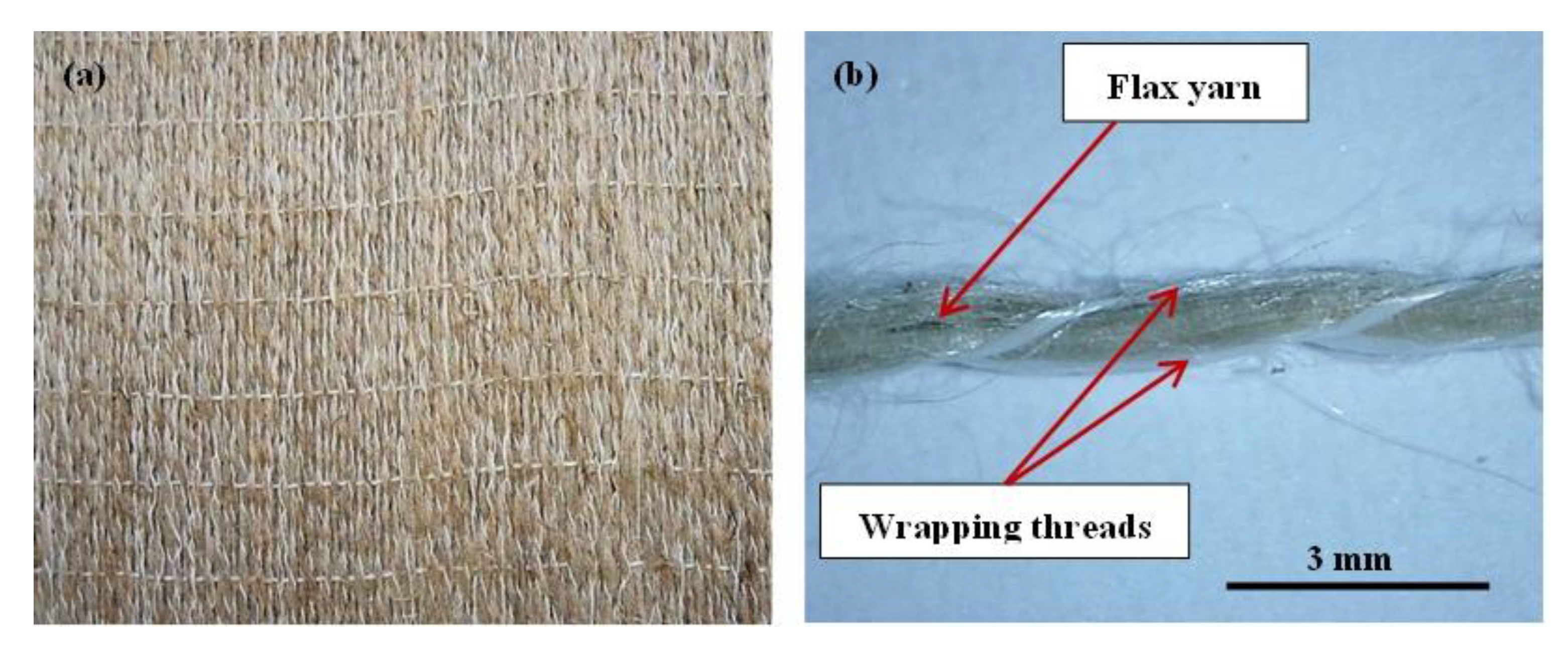
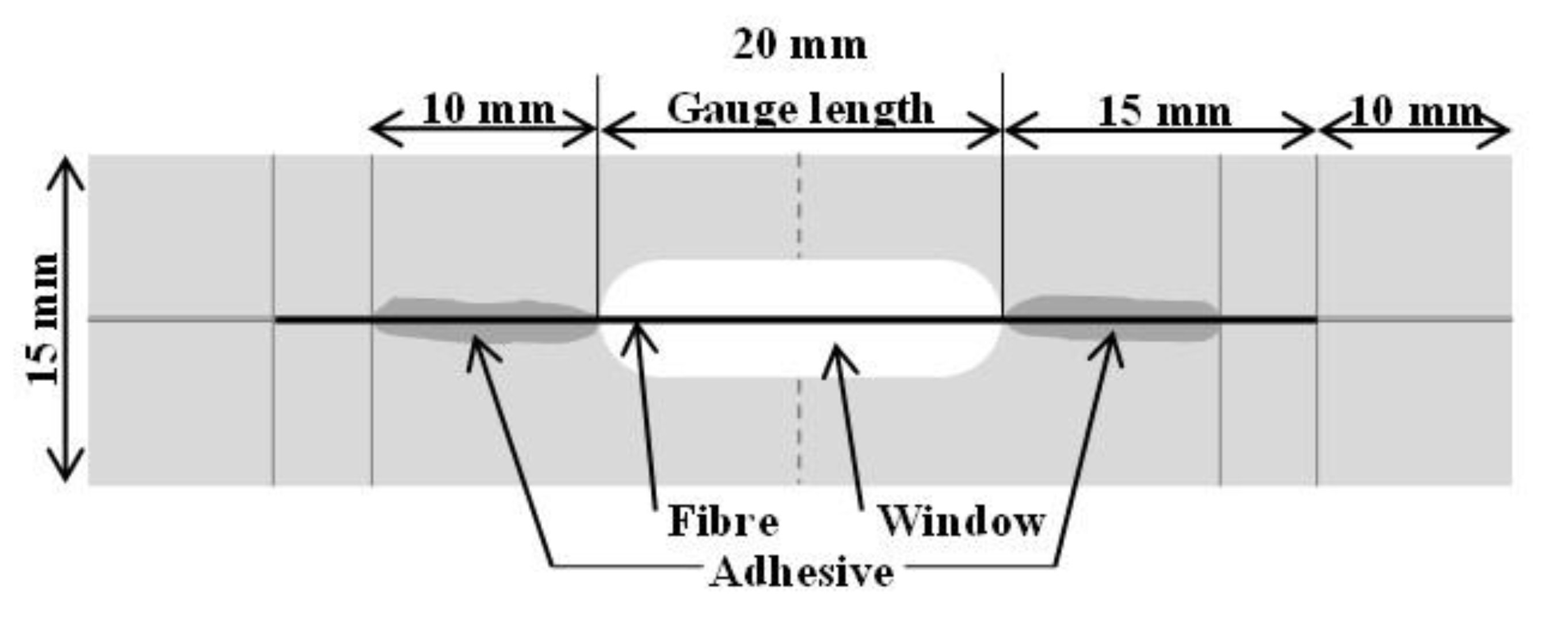
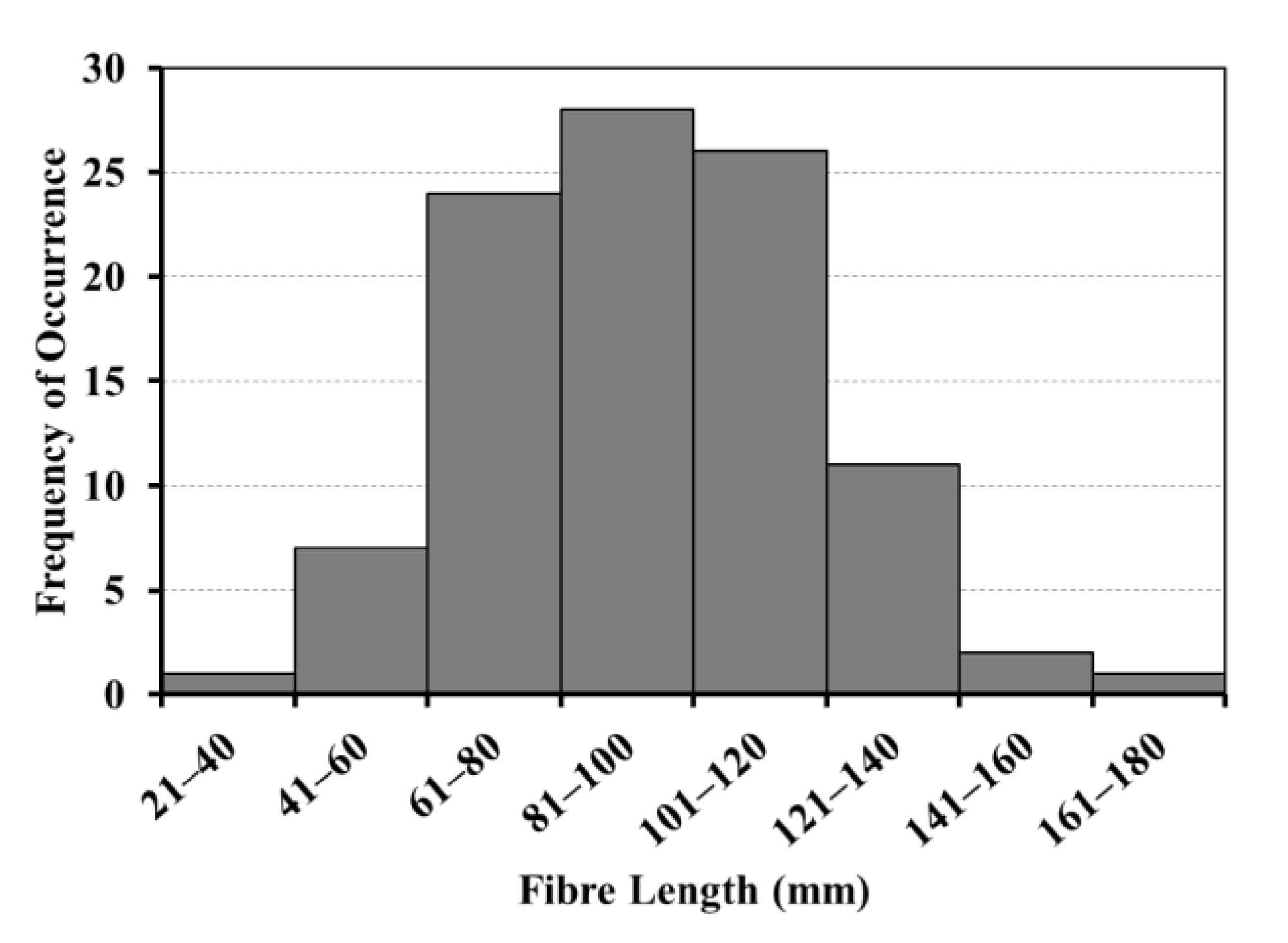
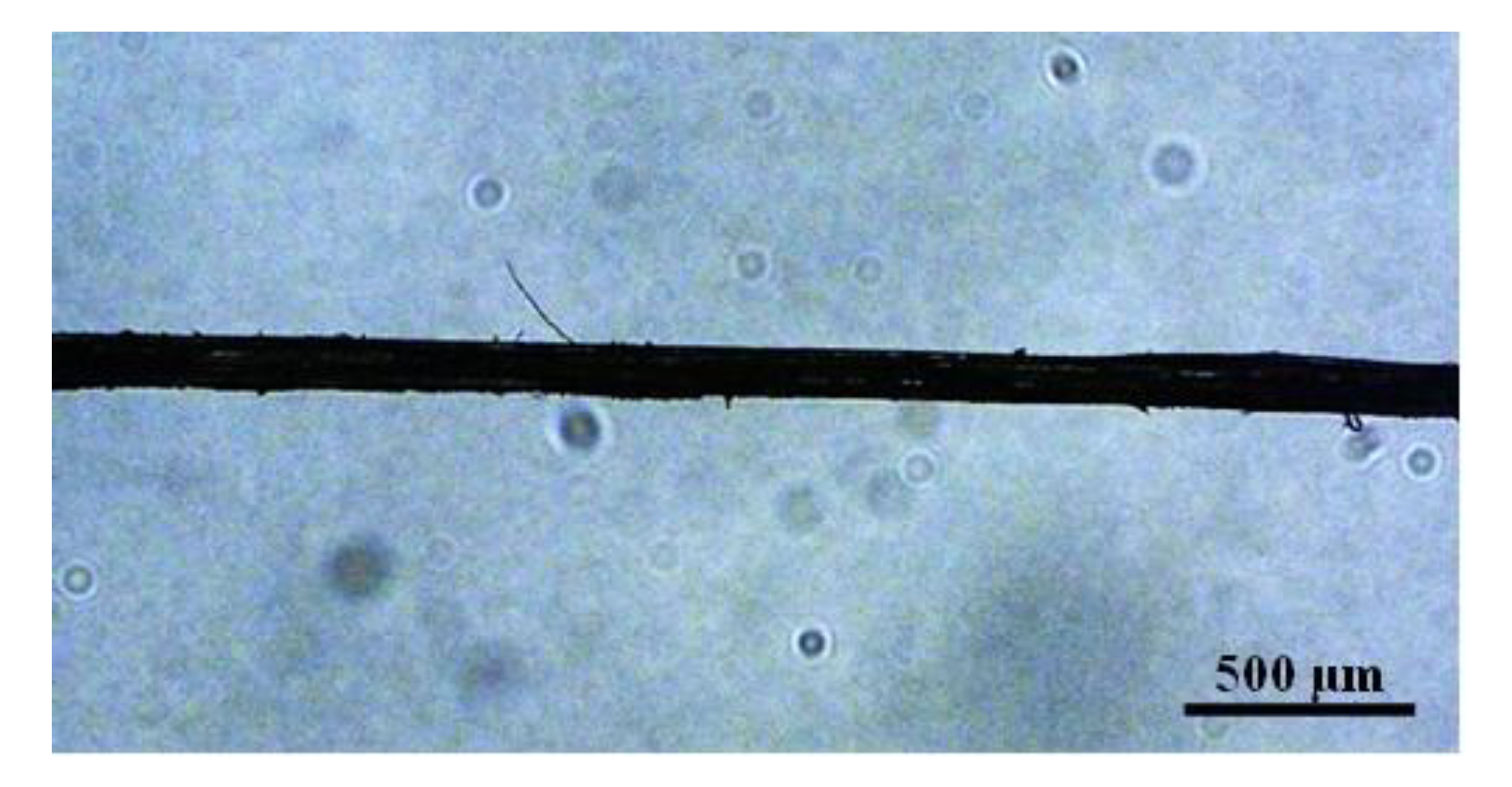

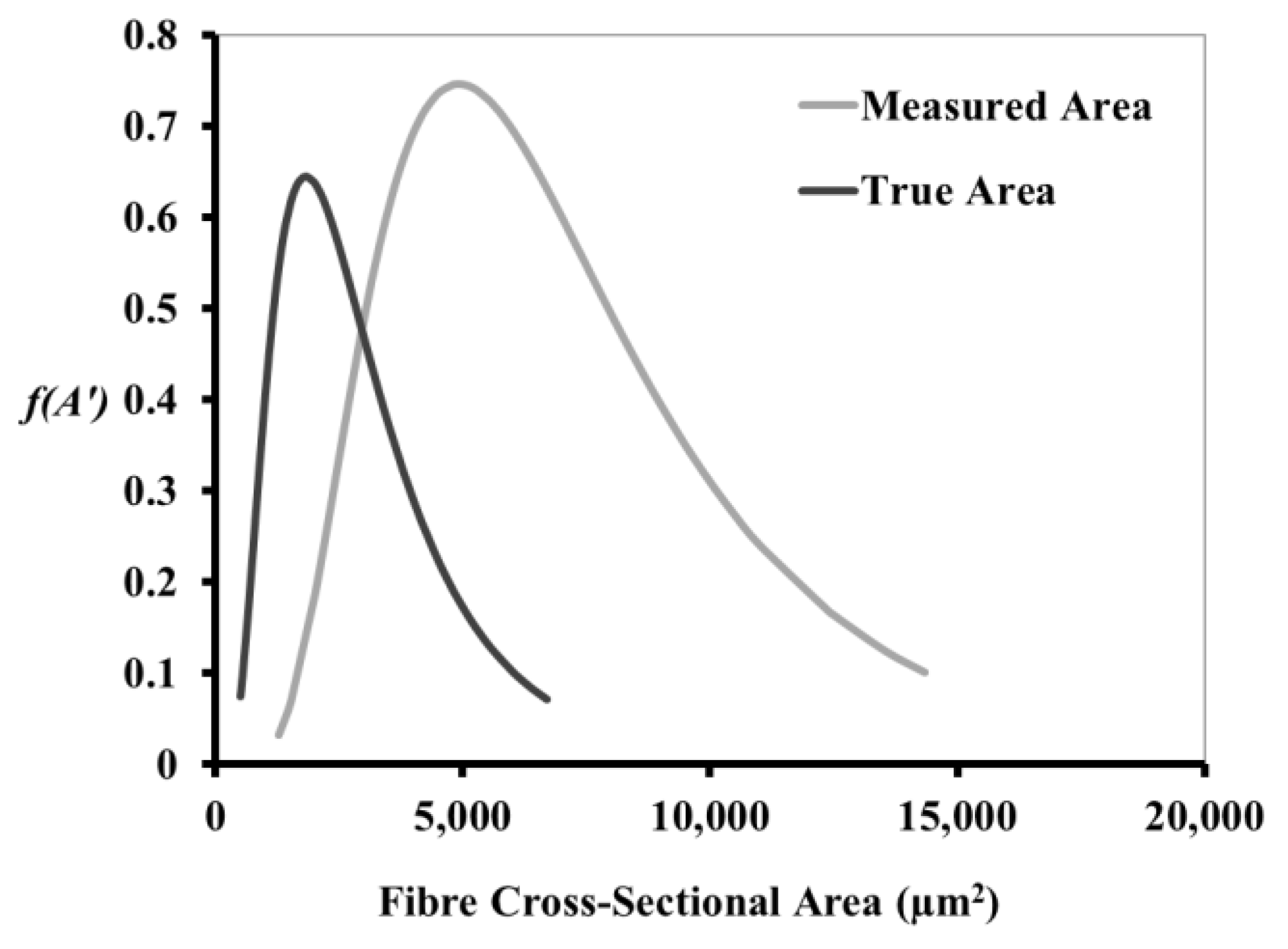

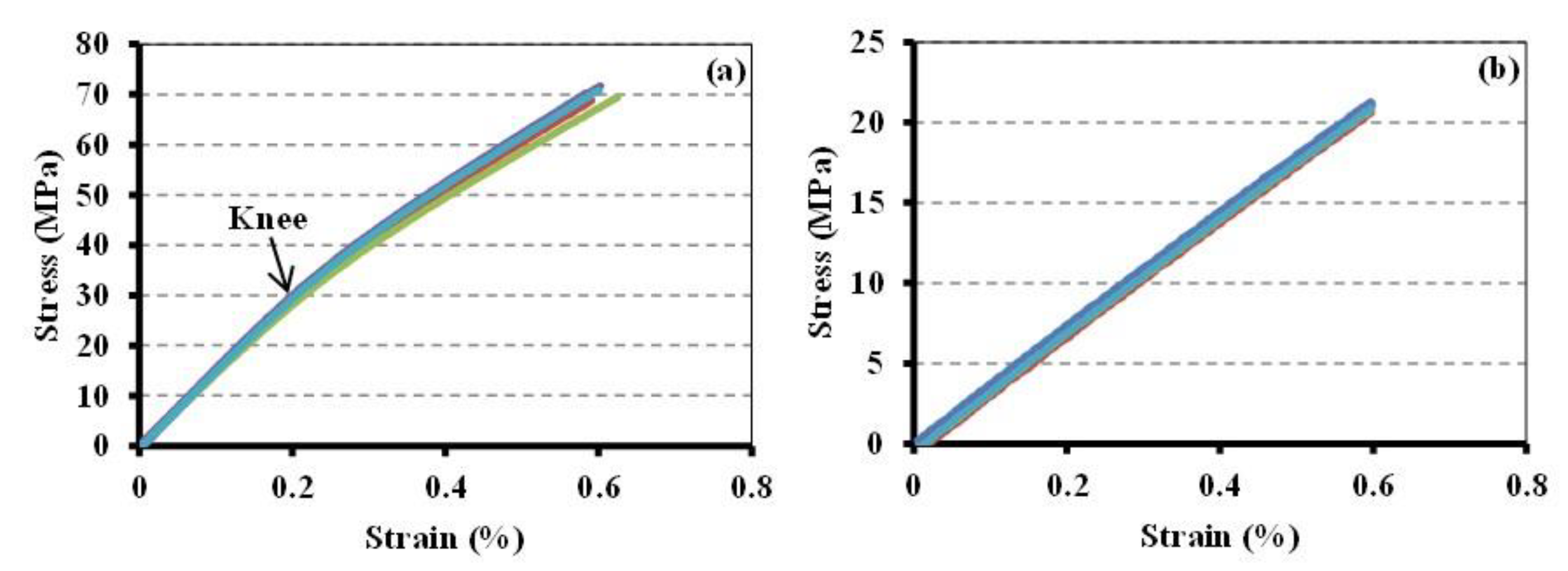

| Nominal Strain at Break or Percent Elongation at Maximum Load, ɛ (%) | Strain Range (%) |
|---|---|
| 1.2 ≤ ɛ | 0.5–1.0 |
| 0.6 ≤ ɛ < 1.2 | 0.5–0.7 |
| Fibre Cross-Sectional Area | ||
|---|---|---|
| ) | 8.50 | 7.51 |
| ) | 0.53 | 0.62 |
| ) | 4929 µm2 | 1827 µm2 |
| 1.71 µm2 | 1.86 µm2 | |
| Property | Average Value | Standard Deviation | Minimum Value | Maximum Value |
|---|---|---|---|---|
| Measured modulus (GPa) | 19.4 | 7.4 | 3.9 | 36.9 |
| True modulus (GPa) | 52.4 | 20.0 | 10.5 | 99.6 |
| Measured strength (MPa) | 347 | 136 | 106 | 738 |
| True strength (MPa) | 936 | 368 | 286 | 1993 |
| Failure Strain (%) | 1.8 | 0.5 | 0.7 | 3.2 |
Publisher’s Note: MDPI stays neutral with regard to jurisdictional claims in published maps and institutional affiliations. |
© 2022 by the authors. Licensee MDPI, Basel, Switzerland. This article is an open access article distributed under the terms and conditions of the Creative Commons Attribution (CC BY) license (https://creativecommons.org/licenses/by/4.0/).
Share and Cite
Soatthiyanon, N.; Crosky, A.; Heitzmann, M.T. Comparison of Experimental and Calculated Tensile Properties of Flax Fibres. J. Compos. Sci. 2022, 6, 100. https://doi.org/10.3390/jcs6040100
Soatthiyanon N, Crosky A, Heitzmann MT. Comparison of Experimental and Calculated Tensile Properties of Flax Fibres. Journal of Composites Science. 2022; 6(4):100. https://doi.org/10.3390/jcs6040100
Chicago/Turabian StyleSoatthiyanon, Niphaphun, Alan Crosky, and Michael T. Heitzmann. 2022. "Comparison of Experimental and Calculated Tensile Properties of Flax Fibres" Journal of Composites Science 6, no. 4: 100. https://doi.org/10.3390/jcs6040100
APA StyleSoatthiyanon, N., Crosky, A., & Heitzmann, M. T. (2022). Comparison of Experimental and Calculated Tensile Properties of Flax Fibres. Journal of Composites Science, 6(4), 100. https://doi.org/10.3390/jcs6040100






